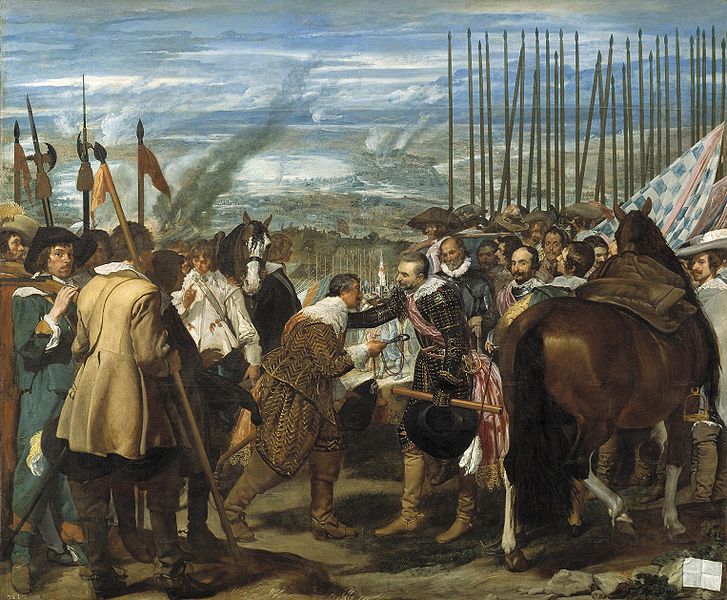Breda, a town in the Spanish Netherlands, was one of the lands of William the Silent, Prince of Orange, a major figure in the struggle for Dutch independence in the Eighty Years’ War. Maurice of Nassau, William’s son, was in command of the town when it was besieged in August of 1624 by Spanish troops under Ambrosio Spinola. The well defended town eventually fell to the Spanish in June of 1625. Not long after the fall of Breda, however, the tide of the war began to turn against Spain. The Dutch and their allies grew increasingly powerful, and in 1637, Prince Frederick Henry of Orange retook the city. In 1648, the Dutch United Provinces were officially declared independent of Spain in the Treaty of Münster.
��The Surrender of Breda, a painting by Diego Velásquez, vividly captures the end of the Spanish siege. The painting depicts the surrender of the Dutch by Justin of Nassau to the Spanish army. In his painting, Velásquez emphasizes the graciousness of the Spanish. He shows the two adversaries, Justin of Nassau and Ambrosio Spinola, meeting as if they are old friends. Spinola puts his hand on Justin’s shoulder, preventing him from kneeling, as if to reassure him that he’ll be treated with respect. The painting, completed ten years after this klippe was struck, is a fascinating depiction of the ideals of 17th century chivalry.
Sources:
http://commons.wikimedia.org/wiki/File:Siege_of_Breda_2_stuiver_74000910.jpg
http://www.cngcoins.com/Coin.aspx?CoinID=115670
http://en.wikipedia.org/wiki/The_Surrender_of_Breda



